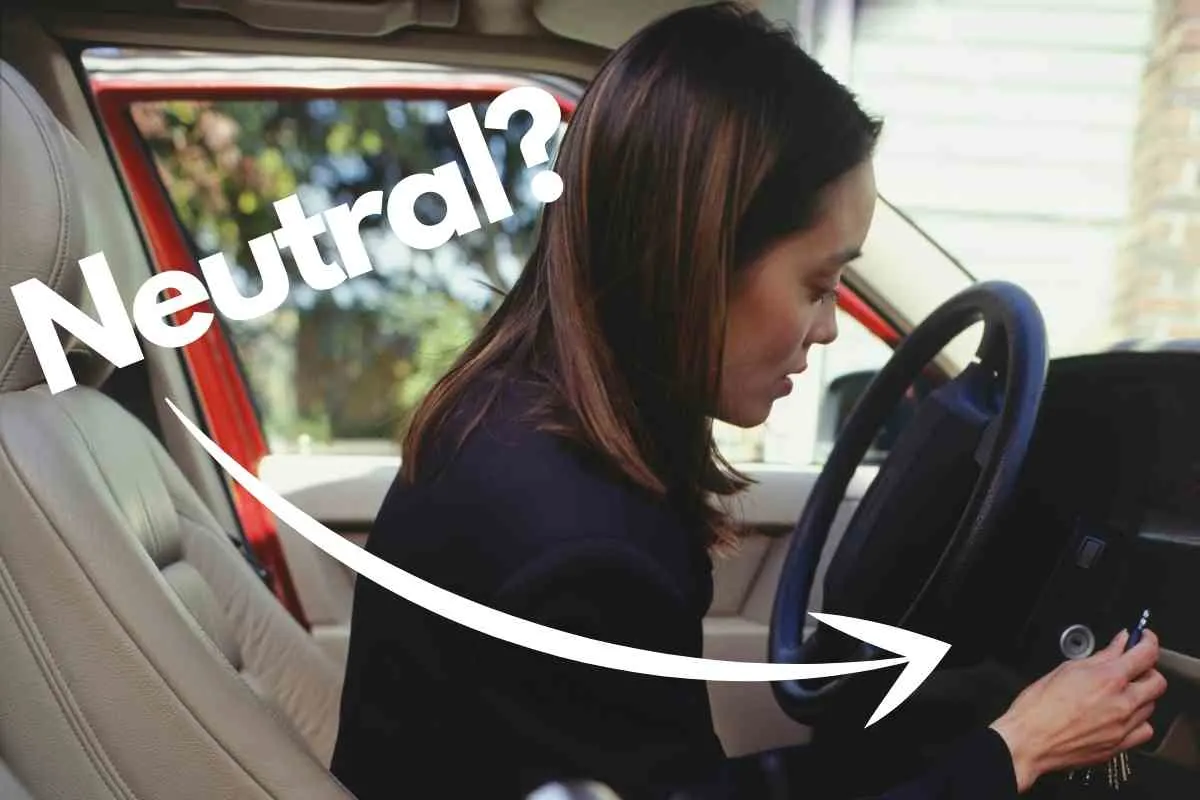I’ve seen a lot of people on the internet claim that it’s bad to start a car in neutral, and I wanted to settle this debate.
Starting a car in neutral does use more fuel but the question really is if it is bad to start the car in neutral?
You can start a car in neutral, but doing so will cause excessive wear and tear to your engine. When you start your car in neutral, the starter motor runs continuously in an attempt to reach a high enough RPM to fire the fuel injector. Starting a car in neutral is a bad habit.
Read on for some insights on the potential risks of starting your car on neutral and other helpful tips to keep your car in good condition.
Why Experts Discourage Starting A Car in Neutral

To understand why this isn’t great for your car, we need to look at what we do when we start a car normally.
When you put your key into the ignition and turn on the engine, the starter motor cranks over until it reaches an RPM where fuel can be injected into the cylinder (around 500-600RPM).
Then once it gets to that point, the fuel is injected and then ignited.
This causes a pressure wave that travels through the cylinder, forcing down piston one (the first piston), which turns your crankshaft.
If you start up in neutral, none of this happens.
The starter motor keeps turning until it gets to that 500-600RPM range where it can fire the fuel injection, except it never does because you don’t have your foot on the accelerator.
Now while that’s going on, something else is happening: wear and tear.
The starter motor in a car (depending upon how old/new of a model) puts out between 200-350ft-lbs of torque to crank over the engine.
This is a lot of stress on the parts, especially if it turns without firing that fuel injection.
So let’s say you’ve got an older car with some wear and tear in certain areas (which will cause more strain on other areas).
Starting up your car in neutral every day would be like doing this to your car every time you start it up.
As you can see, this causes strain on other parts of the engine that are just trying to keep up with all that extra stress put onto them by starting in neutral.
4 Things to Avoid in An Automatic Transmission Vehicle
Automatic cars are great. They give you the convenience of driving without having to put it in gear every time you get on and off of the gas pedal.
They also have their own set of rules that need to be followed for them not to break down.
Here are some things that can cause damage or stress inside your automatic car if done regularly.
1. Switching From Drive to Reverse and Vice-versa Without Stopping
This isn’t good for your transmission. This causes problems with transmissions (and differentials in the case of trucks).
It stresses the gears that are spinning around inside there when you switch between drive and reverse without stopping.
2. Putting Your Car in Park Before It’s Completely Stopped
This causes stress on the torque converter, which allows your car to go from a stationary object (when you’re stopped) to a moving object (when you’re accelerating).
If the torque converter is not allowed enough time to come up to speed, it can cause damage to the engine.
3. Coasting Downhill In Neutral

Coasting downhill in neutral can be very dangerous for your car.
For one thing, when the engine is running in neutral, the pistons are turning at their lowest RPMs.
This means that there’s less oil getting pumped to the engine, which will result in friction and heat damaging the bearings.
Secondly, when you’re coasting downhill in neutral, you can’t use gas to slow your vehicle down or speed it up.
Coasting downhill without using gas dangerously increases your chances of rolling into unsafe situations.
4. Putting Your Car In Neutral At Stop Lights
If you do not put your car in gear while stopped at a stoplight, it is very bad for the transmission.
The starter motor just keeps turning until it gets to that 500-600RPM range where it can fire the fuel injection, except it never does because you don’t have your foot on the accelerator.
The starter motor in a car (depending upon how old/new of a model) puts out between 200-350ft-lbs of torque to crank over the engine.
This is a lot of stress on the parts, especially if it repeatedly turns without firing that fuel injection.
FAQs
Can You Start a Manual Car in Neutral?
No, this is not advised. If you are in a situation where your car has run out of gas, the only thing that will move it is to push it into another gear.
Ensure you have someone else there with you before attempting it because if something goes wrong, they need to be able to stop the vehicle from moving forward involuntarily.
How Can You Tell if a Car Has Been Started in Neutral?
You should be able to hear the starter motor turning over for longer than usual when starting up your vehicle.
Certain sounds are unique to each engine type, so if something seems off, it’s important not to drive the car until looking into what exactly is going on.
What Is The Difference Between Neutral and Park?
In a manual car, you would shift it into “neutral” when you push your vehicle from its current position without having someone else help guide it where to go.
You shift it into “park” after parking for the brake to be engaged in an automatic car.
In Summary
If you start your car in neutral, it can be bad for the engine and transmission because of the stress on those parts.
It is awful for the transmission if you do not put your car in gear while stopping at a stoplight.
The starter motor keeps turning until it gets to that 500-600RPM range where it can fire the fuel injection.
